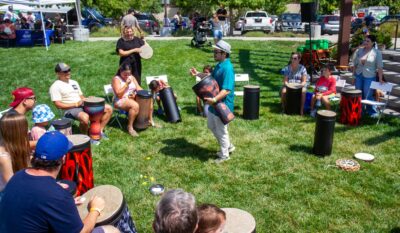Homeowners embarking on renovation projects inevitably confront a fundamental question that shapes every subsequent decision: should they pursue timeless design elements that will endure for decades, or embrace current trends that reflect contemporary tastes? This choice extends far beyond mere aesthetics, influencing resale potential, maintenance requirements, and long-term satisfaction with the investment.
Many property owners find that partnering with experienced professionals like those at home remodeling with JC Construction helps navigate these complex style considerations. These Sacramento-based contractors bring perspective on which design elements have maintained their appeal through multiple decades and which trendy features from past years quickly became renovation regrets. Their expertise illustrates how the timeless-versus-trendy question requires thoughtful analysis rather than impulsive decisions.
Financial ramifications of style choices cannot be overstated. Timeless renovations typically maintain their value longer and appeal to broader segments of potential buyers, while trend-focused designs may require more frequent updates to remain current. Emotionally, homeowners must balance their desire for personal expression with practical considerations about how their choices will age over time.
The Enduring Appeal of Timeless Design
What Makes Design Truly Timeless? Beyond Just “Classic”
Timeless design transcends momentary fashion through connections to fundamental architectural principles that have remained relevant across centuries and cultures. These enduring elements maintain their appeal not through nostalgia but through inherent qualities that resonate with human perception of beauty and function. Proportion, balance, symmetry, and harmony form the foundation of designs that resist obsolescence, creating spaces that feel “right” regardless of when they were made.
Materials that age gracefully constitute another hallmark of timeless design. Natural stone develops patina that enhances character over decades, while quality hardwoods mature with rich coloration that machine-made alternatives cannot replicate. These materials connect to human experience on a fundamental level, evoking responses that technological innovations rarely achieve.
Investing in timeless design elements often requires higher initial expenditure than trendy alternatives. Homeowners should budget accordingly and consider the extended lifespan of quality materials and classic design when evaluating costs.
Signature Elements of Timeless Home Design That Never Fade
Neutral color foundations establish the backbone of enduring design schemes. Whites, creams, grays, and earth tones maintain relevance across decades while providing versatile backgrounds for evolving decorative elements. These palettes derive from natural environments and materials, tapping into enduring human connections with the organic world that transcend fashion cycles.
Architectural elements with clean lines and balanced proportions form another pillar of timeless design. Crown molding, wainscoting, coffered ceilings, and thoughtfully designed trim work add definition and interest without relying on temporary trends. These features enhance spatial perception while providing subtle sophistication that becomes more appreciated over time rather than quickly dating the space.
While these timeless elements maintain broad appeal, regional architectural traditions may influence which specific features resonate most strongly in particular locations. Homeowners should consider local context when selecting timeless elements for their renovations.
The Allure and Risks of Trendy Design
Decoding Design Trends – How Styles Rise and Fall
Design trends follow recognizable patterns of emergence, adoption, saturation, and eventual decline as they move through the market. Initial appearance often occurs in high-end design showcases and prestigious projects, creating aspirational appeal that filters into mainstream applications over subsequent years. As adoption increases, mass-market variations proliferate until ubiquity diminishes exclusivity, and early adopters seek differentiation through newer alternatives.
Social media platforms have fundamentally altered trend lifecycles through unprecedented distribution speed and global reach. Designs that previously might have developed regional popularity over the years now achieve international exposure within weeks, compressing adoption timelines while simultaneously hastening obsolescence. This acceleration challenges homeowners to implement trends that may approach saturation before renovation completion.
Trend-focused renovations inherently carry a greater risk of premature obsolescence than timeless alternatives. Homeowners pursuing trendy designs should budget for potential updates within 5-10 years to maintain current market appeal.
Today’s Hottest Home Design Trends and Their Staying Power
Bold colors and statement patterns enjoy prominence in interior design, with jewel tones and geometric configurations appearing throughout contemporary spaces. These elements introduce energy and personality while creating memorable environments that photograph impressively for social media sharing. Their visual impact provides immediate gratification that more subtle approaches may lack, explaining their persistent appeal despite relatively short lifecycle expectations.
Material innovations continue expanding design possibilities through engineered products that mimic natural materials while offering enhanced performance characteristics. Colored concrete, three-dimensional tiles, and composite surfacing materials provide visual interest and functionality that traditional alternatives cannot match. These innovations sometimes establish new classics when their performance advantages complement aesthetic longevity.
Trending design elements vary significantly in installation complexity and removal difficulty. Homeowners should consider future reversal costs when implementing distinctive trends, as fashionable choices may require substantial investment to update once they fall from favor.
Strategic Decision-Making for Your Remodel
The Lifestyle-Driven Approach to Design Planning
Effective renovation planning begins with an honest assessment of daily living patterns rather than idealized visions disconnected from practical requirements. Observing how household members use spaces reveals functional priorities that should guide design decisions regardless of current fashion. This reality-based approach prevents costly implementations of trendy features that fail to enhance daily experience while ensuring investments address genuine needs.
Residence duration substantially impacts the appropriate balance between timeless and trendy elements. Homeowners anticipating decades in their current property benefit from foundation investments in enduring components, while those expecting shorter tenures might reasonably incorporate more contemporary elements aligned with immediate market preferences. This timeframe analysis helps allocate resources appropriately while preventing misalignment between design longevity and practical requirements.
Individual lifestyle requirements vary dramatically, making standardized design recommendations potentially misleading. When making renovation decisions, homeowners should prioritize their specific needs and preferences over generalized guidelines.
The 80/20 Investment Strategy for Lasting Design
Strategic resource allocation distinguishes successful renovations by deliberately prioritizing permanent versus changeable elements. The 80/20 approach dedicates approximately 80% of budgets to enduring components while reserving 20% for more trend-responsive accents that can evolve without major reconstruction. This balance provides longevity while allowing personal expression and periodic refreshment without wholesale replacement.
Investment prioritization focuses substantial resources on architectural foundations, quality construction methods, and premium materials in highly visible and frequently used areas. These core investments establish long-term performance while creating framework flexibility that accommodates evolving decorative elements. Kitchens and bathrooms benefit from this approach through quality cabinetry and plumbing supporting multiple style iterations through simple surface updates.
Budget constraints sometimes necessitate the phased implementation of renovation plans. Completing foundational elements before decorative components ensures essential infrastructure supports future updates while providing immediate functional improvements.
The Hybrid Approach: Blending Timeless and Trendy
Creating Flexible Foundations That Evolution-Proof Your Home
The most successful renovations combine enduring foundations with adaptable elements that accommodate evolving preferences. This hybrid approach establishes architectural frameworks with inherent longevity while incorporating design flexibility that supports periodic updates. Structural elements like doorways, windows, and room configurations prioritize timeless proportions and placements, while decorative components allow expression that evolves with changing tastes.
Neutral base palettes provide essential versatility by accommodating diverse accent colors and decorative elements without requiring major reconstruction. These foundational color schemes work with virtually any trend direction, allowing homeowners to refresh spaces through simple accessory changes rather than comprehensive renovations. The resulting adaptability extends design relevance while minimizing update costs when preferences shift.
Flexible design approaches require thoughtful planning beyond immediate style preferences. Homeowners should consider potential future needs and style evolutions when establishing structural elements and permanent features that resist easy modification.
Where to Embrace Current Styles
Certain areas naturally accommodate trend exploration with minimal long-term consequences. Wall colors, lighting fixtures, hardware, and textile selections offer low-commitment opportunities to incorporate contemporary elements without substantial replacement costs when fashions change. These components can transform spaces dramatically while preserving the enduring value of more permanent investments in quality materials and construction.
Trendy elements work most successfully when implemented as focused accents rather than dominant features. Statement backsplashes, distinctive light fixtures, or bold furniture pieces create visual interest while remaining relatively simple to update. This strategic concentration preserves design flexibility while satisfying desires for contemporary expression that purely traditional approaches might lack.
Even seemingly minor trend implementations sometimes create unexpected visual dominance that complicates future updates. Homeowners should evaluate potential trend applications in context rather than isolation to assess their overall impact on space perception and modification potential.
Making Peace With Your Design Decisions
Creating Authentic Living Spaces
Ultimately, the most successful renovations transcend rigid categorization by focusing on authentic personal connection rather than external validation. These environments reflect inhabitants’ values, support daily activities, and evoke positive emotional responses regardless of current fashion status. Their success stems from deliberate consideration of how spaces function practically and emotionally rather than how they align with external expectations.
Design confidence develops through clear articulation of personal priorities and systematic evaluation of options against these criteria rather than transient trends. This authentic approach produces environments that maintain satisfaction through fashion cycles because their foundation rests on individual needs rather than external validation. The resulting spaces develop character that mass-market trend adherence cannot replicate.
No renovation approach guarantees perpetual relevance as personal preferences and broader design contexts evolve. Homeowners should embrace the inherent impermanence of all design choices while making thoughtful decisions that maximize long-term satisfaction and value.
The timeless-versus-trendy question resolves not through rigid adherence to either extreme but through thoughtful integration that honors longevity and personality. By establishing enduring foundations while accommodating controlled trend exploration, homeowners create environments that evolve gracefully while maintaining their essential character. This balanced approach satisfies immediate desires for contemporary expression while protecting long-term investment value through adaptability and quality.
Finding Your Perfect Balance
The timeless-versus-trendy dilemma resolves most successfully through thoughtful integration rather than absolute adherence to either extreme. By establishing enduring foundations while incorporating controlled trend elements, homeowners create spaces that evolve gracefully without requiring constant renovation. This balanced approach satisfies immediate aesthetic desires while protecting long-term investment value through adaptability and quality craftsmanship.
Renovation success ultimately depends less on following specific style rules than making intentional choices aligned with authentic preferences, practical needs, and realistic timeframes. Homeowners who clearly understand their priorities, honestly assess their lifestyle requirements, and thoughtfully evaluate design options against these criteria typically achieve greater long-term satisfaction than those who reflexively adopt current trends or rigidly adhere to traditional formulas without consideration of context.
The home renovation journey represents an opportunity for self-discovery and expression beyond mere fashion following. By approaching design decisions with thoughtfulness, intention, and flexibility, homeowners create spaces that transcend trend cycles while supporting evolving life experiences. These environments maintain relevance not through rigid style adherence but through authentic connection to the people inhabiting them – perhaps the most timeless design principle.






